Mount Ijen is a volatile uninhabitable volcano whose giant jagged crater is filled with an acid lake prepared to dissolve almost anything that contacts it. Plumes of thick yellow smoke belch out of the abyss adjacent to the placid electric blue waters. Stained canyon walls indicate sulfur. And lots of it.
Sound like your ideal vacation spot?
For less than $22 USD you can climb this volcano and venture down into the belly of the beast. Right into the thick of the noxious sulfur plume to catch of glimpse of the blue fire.
Yes, literally blue fire.
You climb the steep volcano in the dead of night to arrive in its basin before dawn. The flames are only visible at night. The heat from beneath the surface of the volcano bursts through the crust with glowing blue & purple flames pouring from the spout it created.
These flames are not lava but instead 1,112 degrees F* (600 C) sulfuric gas igniting as it breaches the surface. Flames can reach 16 feet high. During our visit flames were tame at a mere 2-3 feet high.
As you may have already deduced this isn’t a cakewalk. The Mount Ijen trek is difficult due to both volcanic and weather conditions. But the reward is so worth the effort.
It was one of the most memorable experiences of our trip so far.

Inside the Crater
Gas masks are required to enter the crater. The sulfuric fumes are toxic and even with the mask every time the smoke billows your way- you’re left counting the seconds until the wind shifts and you can breathe again.
The climb up the volcano is steep and around 1.5 hours of strenuous uphill climbing. And when you reach the top you’re really only ¼ of the way there. You’ll go down into the crater about 1 km deep. Scaling rocks and methodically picking each step, careful to avoid the miners rushing up and down the thin paths.
The blue fire was magical. The acid lake glowing as the sun rose pink and gold behind it. The wind whipped our faces as we admired the unique arid landscape.
But after summiting Mount Ijen, it was the miners that stuck with me.
This “acid lake” is one of the most acidic bodies of water on earth. For you science geeks out there- this lake has a PH of .5. For reference, stomach acid has a PH of 1.5-3.5. The lower the PH the more dissolving power the acid has.
Ijen was more than hostile. It was a difficult climb; cold, gusting winds throwing ash, dust, and rocks into your eyes, and the very air you breathe is toxic. I spent the day hacking up a lung and pouring water into my eyes to clean them. It took several days before my eyes weren’t bloodshot.
And yet these miners climb this mountain every single night, descend into the depths of the crater, and harvest chunks of yellow raw sulfur.
They carry 70-kilos of sulfur up at a time. All piled into baskets on their backs. Each 70-kilo load yields them about $5 USD. If they are lucky they can get two loads per night. Maybe. Unfortunately, this is one of the highest-paid professions in the area. Which is probably what keeps the miners coming back in the first place.
During this experience we were miserable. It’s one of those adventures you look back on and are thankful you did it, but would I volunteer to do it again? I’m not so sure.
The Lives of the Miners
I met several of the miners. Deep scars ripped across their shoulders and backs from the crude baskets they carried & the heavy loads they supported. They wore no gas masks even as they sat directly in the sulfur plume. Some had secondhand sunglasses or bandanas covering their faces and eyes.
Their very bloodshot eyes.
After returning from Ijen, I did some research and I found that National Geographic did a profile on these miners not too long ago. The working conditions were indeed abysmal. Most couldn’t afford the proper protective gear and those that could, couldn’t wear it and work effectively.

They found the life expectancy of the average sulfur miner to be 45-50 years old. Most of the miners harvest at night while it’s cool and the winds are less volatile. Which gives them little time with their loved ones and families.
The life of a miner is hard. Beyond what my comfortable lifeform can comprehend. The working conditions are brutal and the reward–not enough.
What do we use sulfur for?
In the past raw sulfur was used in gunpowder. Today, we use it mostly for cosmetics and bleaching sugar. Sulfur is a natural compound that makes up 3% of the earth’s crust. It is commonly found in volcanic areas, like Indonesia’s Ring of Fire and Iceland.
How Tourism is Helping
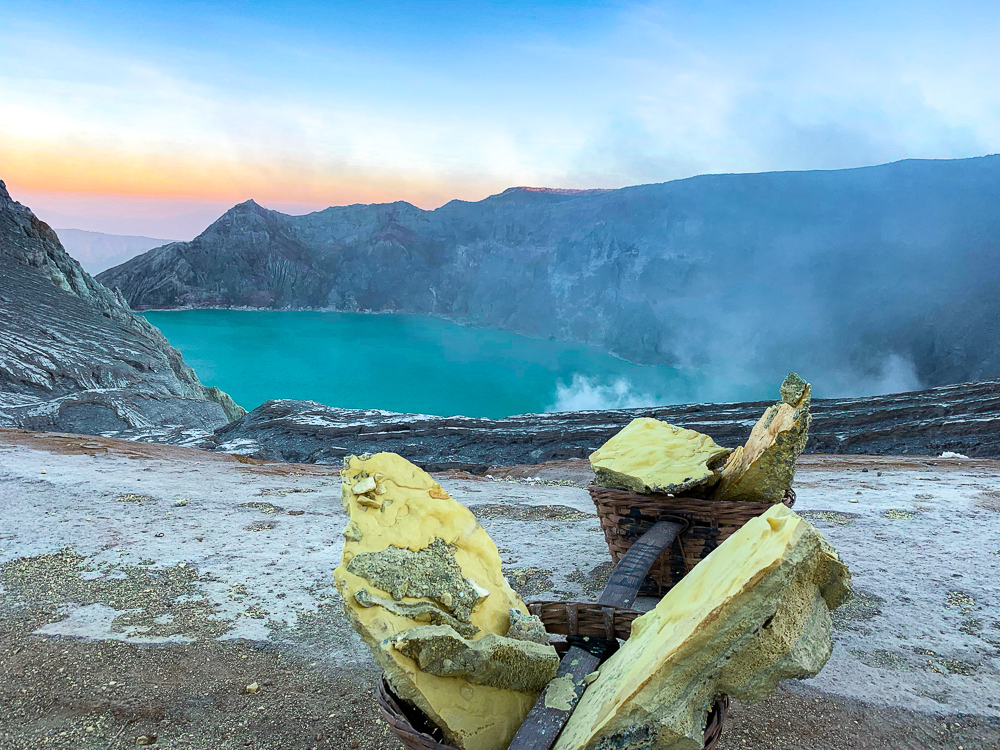
The good news is….tourism can actually help here. Ijen is located on the island of Java which is just beginning to see some spillover tourism from Bali. Miners who speak English can trade working in the mines for guiding travelers safely up and into the Ijen crater.
No more toiling away in the mines, instead, they can limit their summits to 3 times per week.
This is why it’s important to get a guide. And a good one.
I’m always a big proponent of doing things the cheapest and most DIY way possible. But hiring a guide is literally saving lives here. Ex-miners can make a better living and you get a safe and hassle-free tour in the process.
And for you hard-core DIY’s out there, I promise it doesn’t change the experience. Even if you opt to do it yourself, there will still be an equal number of people on the volcano. Ijen isn’t crowded by any means (aside from when you’re in the crater itself) because of its intensity and the physical ability required.
Going without a guide is similar in cost & you’ll still be on the mountain with the same amount of people if you want to see the sunrise.
Tourism can also hurt.
Specifically, “poverty-tourism“. Most tourists at Ijen are seeking the blue flames or photos of the placid electric blue lake. But in the process, oblivious tourists can treat the miners like a prop.
Here’s how you can visit Mount Ijen with respect to those who risk their lives working there day in and day out.
- Don’t photograph the miners unless you have explicit permission.
- Even with permission, make sure your photos are in good taste and give them a tip.
- Stay out of their way. Climbing into the crater you’ll be pressed along a small and crowded trail. This is the only way in and out of the crater. When the miners attempt to pass you, LET THEM. Their work is indescribably difficult and tourism should not make their job harder.
Planning Your Trek up Mount Ijen
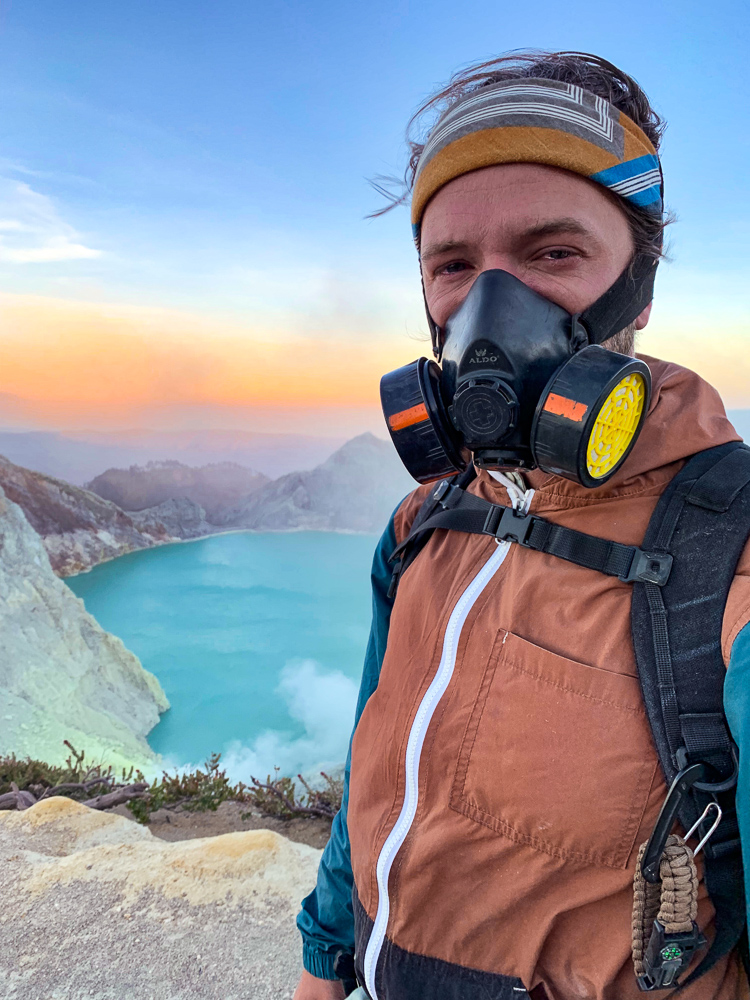
Watching the sunrise over the volatile crater is worth the trouble of the climb. Here’s everything you need to know to plan your volcanic excursion.
Getting There
Ijen tours typically begin in Banyuwangi– the Easternmost point of Java. To reach the city you can take a 20 min ferry from Bali or travel by train/bus from various cities in Java.
Tour Agencies are everywhere. All offering various services at various prices. Picking one is all up to you. The average cost per person was around 300k rupiah. (Around $21)
I don’t recommend paying extra for a private tour. Mt. Ijen has one trail up, one trail into the crater, and one flat plateau for sunrise. Even with a private tour, you’ll still be in the exact same spot at the exact same time as everyone else trekking.
What to Expect on Your Tour
The tours are all set up the same way. The blue fire is only visible in the dark of night and then you’ll position yourself on top of the volcano for sunrise.
You’ll be picked up from your accommodation between 12 AM-1 AM, depending on your proximity to the Ijen plateau. Your driver will deliver you and around 6 others to base camp where the tour guides await by the campfire. After piling on the extra layers and rallying the troops, your guide will take you on a brisk uphill hike for about an hour and a half.
The hike is mildly strenuous. Dusty, dark, and steep. But with decent physical fitness, it’s not overly difficult.
At the summit, you’ll be greeted with freezing air and howling wind before you descend into the mouth of the volcano. It’s another hour or so of carefully picking your steps and hugging the rocky walls of the slippery path to the fire.
Be efficient with your time. Those who began their descent last didn’t make it back up before the sunrise.
After a few moment’s oogling the fire, you have to fight your way back to the summit through the throngs of stragglers and miners climbing down. Sunrise at the summit is beautiful. The pale pink and yellow skies illuminate the electric-blue poison lake and matched with the arid landscape at 9,000 ft up- create an epic scene.
Following sunrise, you’ll regroup at base camp and be delivered back to your accommodation doorstep following a stop at a nearby waterfall (with some tours).
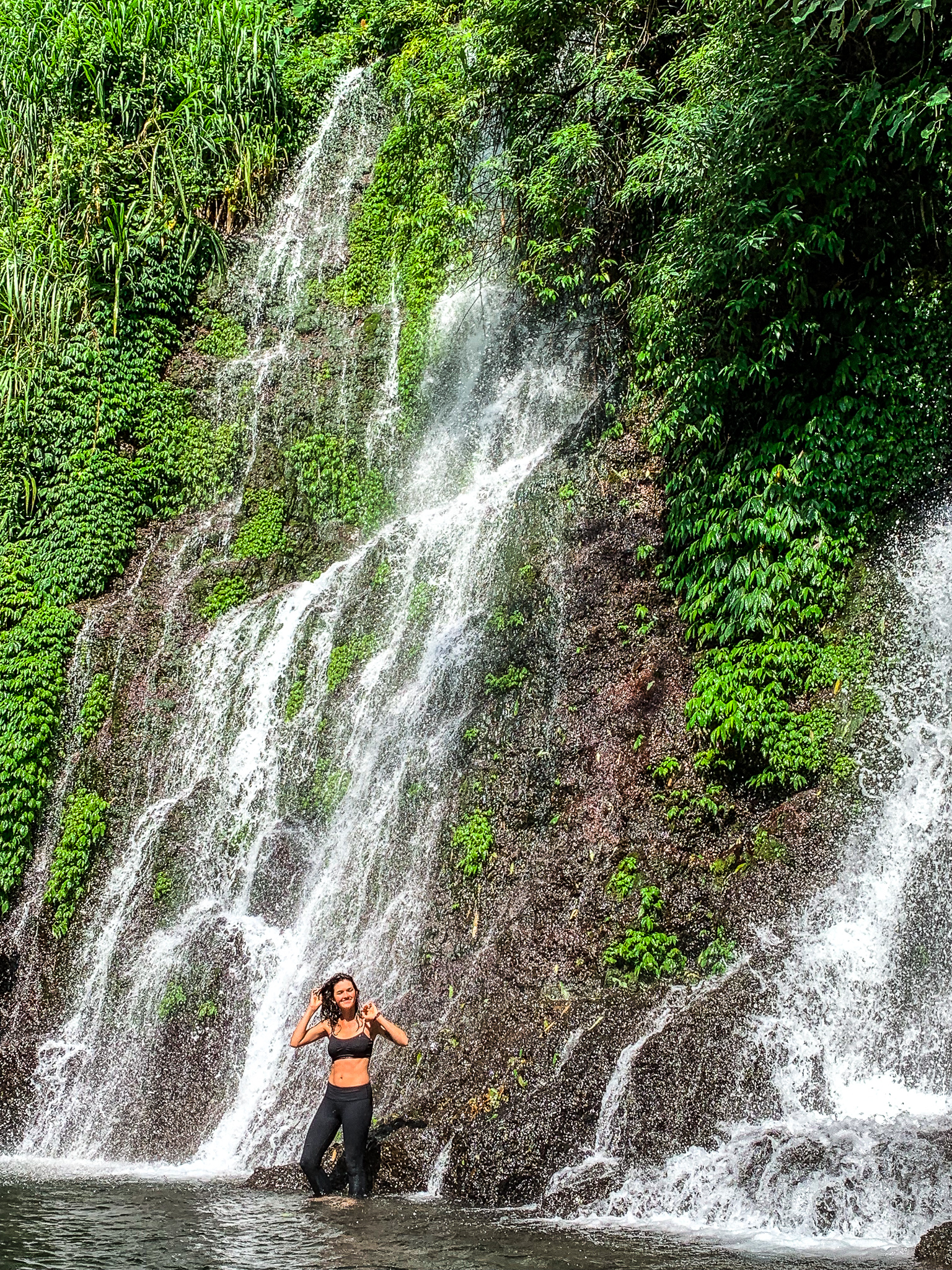
Things You Should Know
- Bring protective gear. A gas mask is a must. Most tours provide them. Also, bring sunglasses and a face cover for the volcanic ash and gravel that gets thrown about in the wind.
- Bundle up. Wear layers and anticipate the cold. With the wind and elevation, the top of Ijen can be frigid.
- Don’t panic. Sulfur is a toxic gas. The gas mask helps filter the air you’ll breathe but when inside the crater you may become engulfed in the smoke cloud. Your guide will instruct you to remain calm & allow it to pass over you.
- Bring an extra bottle of water. I used a whole one just to wash out my eyes at the end of the trek.
- Bring an extra gas mask if you can. A miner asked me for one and my biggest regret was that I couldn’t leave my rental.
- Get to sleep early. It’s going to be a long and strenuous night so try and not miss out on sleep.
Exploring Indonesia? Here are a few other thrill-seeking experiences you shouldn’t miss out on.
- Mount Bromo: How to Climb Indonesia’s Most Popular Peak for Free
- Trekking Sumatra: How to Catch a Glimpse of the Last Sumatran Orangutans
- Komodo National Park, Seeking the Dragon


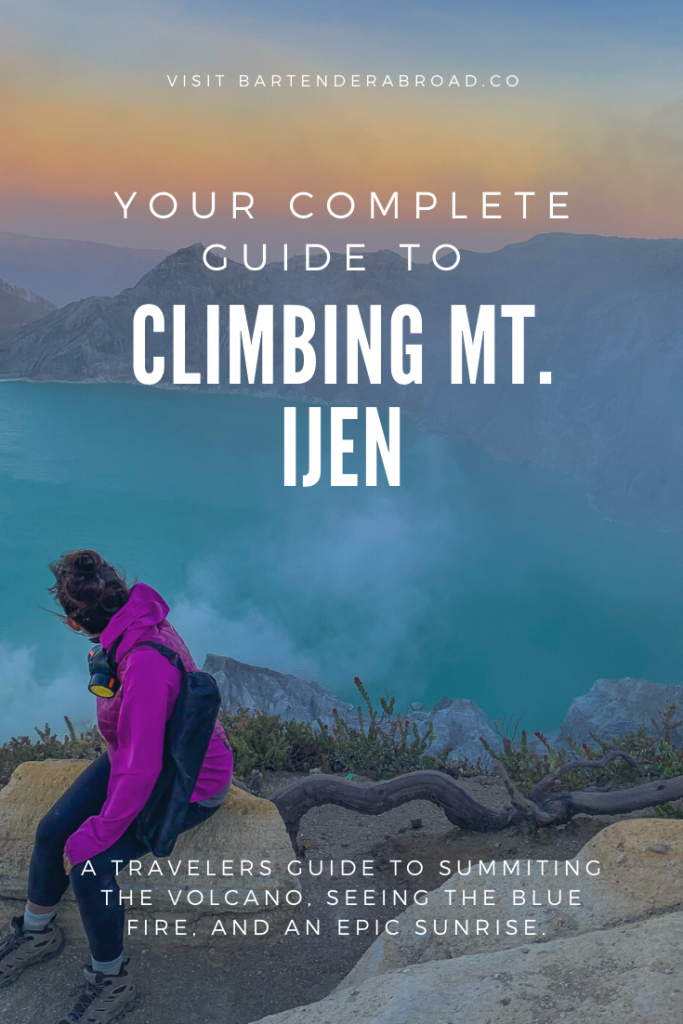
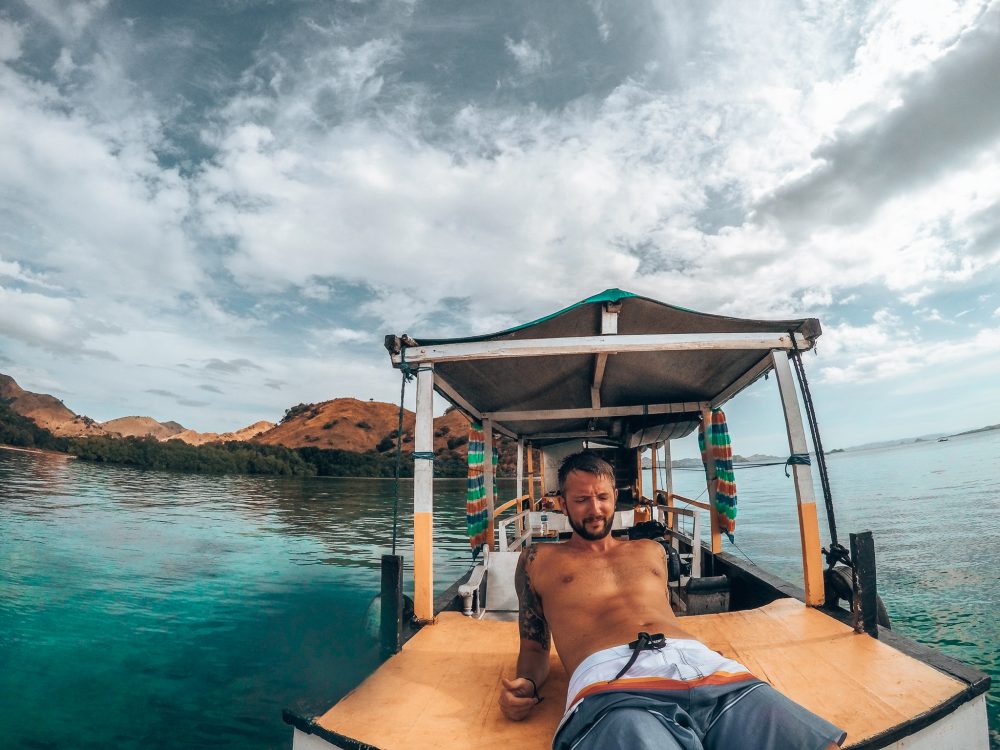
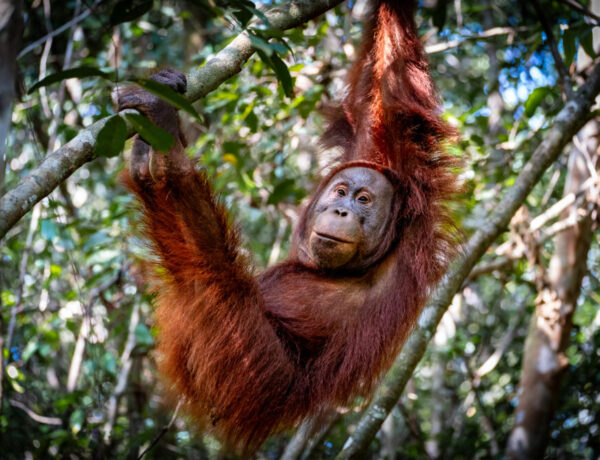
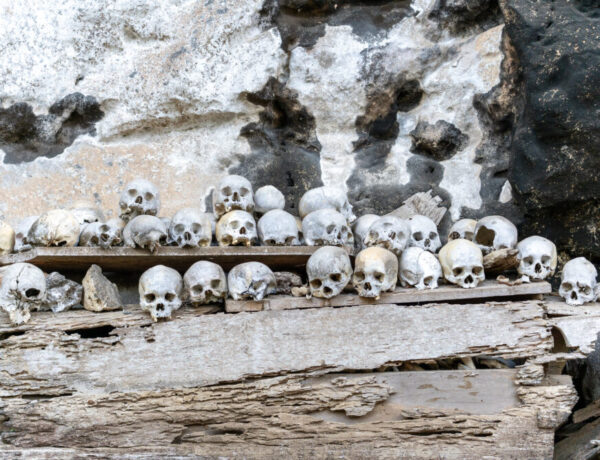


9 Comments
Mount Bromo: How to Climb Indonesia's most popular peak for free
March 27, 2020 at 8:40 pm[…] Surviving Ijen: Indonesia’s Volcano of Blue Fire […]
Over-Tourism: How it's Affecting Our Planet - Bartender Abroad Visit BartenderAbroad.co
March 27, 2020 at 11:14 pm[…] Surviving Mt. Ijen: Indonesia’s Blue Fire Volcano […]
What to Learn Before Your Trip to Indonesia - Tripscholars
February 16, 2021 at 9:47 am[…] My experience climbing Ijen was one of the most memorable of my time in Indonesia. It was almost painfully beautiful to experience the sunrise over the acid lake, watching the blue flames licking out of the mouth of the volcano. It was also eye-opening to meet a few of the miners who live in these hostile conditions day in and day out. […]
What to Learn Before Your Trip to Indonesia - Trip Scholars
July 23, 2021 at 2:12 pm[…] My experience climbing Ijen was one of the most memorable of my time in Indonesia. It was almost painfully beautiful to experience the sunrise over the acid lake, watching the blue flames licking out of the mouth of the volcano. It was also eye-opening to meet a few of the miners who live in these hostile conditions day in and day out. […]
Karen Willis
November 24, 2021 at 6:55 amRemember climbing Mt Ijen, during the day though as we’d been diverted from Mt Bromo. UK Gov’t said it was too dangerous for us, although apparently OK for the Dutch party we kept meeting en-route! Even with the loads the miners carried, they were super-friendly and helped us – one elderly miner gave me his stick when he saw me struggling with the loose stones underfoot. Very special people and we were more than happy to share food & water with them, and tip for photos.
What to Learn Before Your Trip to Indonesia – Trip Scholars
March 24, 2022 at 4:10 pm[…] My experience climbing Ijen was one of the most memorable of my time in Indonesia. It was almost painfully beautiful to experience the sunrise over the acid lake, watching the blue flames licking out of the mouth of the volcano. It was also eye-opening to meet a few of the miners who live in these hostile conditions day in and day out. […]
The Deadliest, Most Dangerous Hikes in the World - Fodor's Travel - Wisata Bukit Lawang
May 20, 2022 at 11:05 pm[…] canyon itself, it can be nearly impossible to reach anyone for help.Mount Ijen just might be the most inhospitable landscape on planet earth. The active volcano holds an electric blue acid lake in its caldera, capable of melting metal and […]
Tayler
December 24, 2022 at 6:00 amAny idea on how one would go about donating masks to these workers?
Sharon
June 6, 2023 at 8:23 amI came across your Mt Ijen publish on Going’s weekly newsletter, which was exciting since my husband and I just went to Mt Ijen last week! Heads up to other travelers to check on the volcanic activity. Due to a recent eruption a few months ago, the ticket office temporarily opens at 4am not 2am now and you are no longer able to hike down right next to the sulfur mines to see the blue flames. Even when it gets smoky at times depending on the direction of the wind, the beautiful blue color and pink sunrise are still amazing to witness.